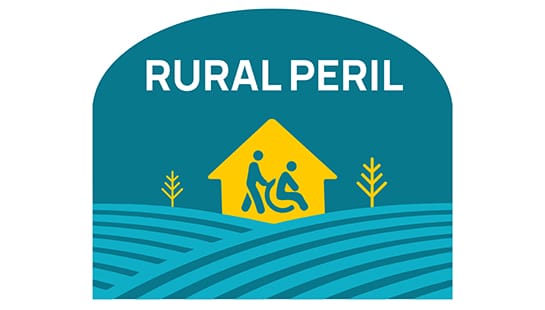
The first time I saw a video of a tsunami making landfall, I was awestruck by how simple and non-threatening it first looked. I guess I was expecting something like a huge wave crashing over the side of some Titanic-looking ship.
But, no, it was a broad, knee-high tide rolling onto the beach. With another low line of water quickly following the first. Then, like some bath mat in a filling tub, the entire coastline started to disappear — and the water didn’t recede.
And then everything was submerged as far as the eye could see. Every sponge on Earth couldn’t have soaked up enough water to make things right again.
It’s that type of rising disaster we see in our midst whenever we discuss rural healthcare, and long-term care in particular. Just like in the tsunami video, people on the ground are eventually aware of what’s happening and start holding more animated discussions about it as the first waves come closer. But soon, it’s too late.
The plight of rural nursing homes has been forewarned for a while, with little improvement. But now the pandemic, followed by the threat of a federal staffing mandate, is expediting what seems to be a disaster in the making.
Yes, rural long-term care issues are as hard as the dry South Dakota plain in summer, and solutions are elusive. That’s what makes a current project by McKnight’s Long-Term Care News Senior Editor Kimberly Marselas so special.
While many have talked about the challenges, Marselas actually put her feet on the ground to observe and talk to frontliners in person to gain valuable context. Her ongoing series, “Rural Peril,” is running this month and is a must-read for any long-term care stakeholder (i.e. you since you’re reading this).
What she found is that empty beds and untenable staffing needs are pushing the nation’s rural nursing homes, often community care hubs, closer to the brink of collapse.
Overstating things, you say?
Tell that to the operator who doesn’t have enough workers to keep all beds open and has had only one potential CNA trainee in the last many months of advertising. (And that applicant quit the first day.) Or tell the family members who must drive 30 miles or more — or out of state or for as many as 100 miles — see a loved one at a new facility. Too many nursing homes in small towns are closing simply because they don’t have enough workers or other resources to continue.
Most funding problems can be attributed to the levels of federal and state support. Face it, if the government wants to be the de facto patron of the nursing home sector — as it invariably is, given the current oversight structure — it needs to invest more in its businesses.
That’s right: Its businesses. No matter whose name is on the deed or management contract, this show is being run by Uncle Sam and his state counterparts. And the problems created by the growing lack of access are a problem for caregivers everywhere.
To believe that the rural peril is not pertinent to anyone not in a rural area is foolish thinking at best. Colleagues in peril indicate a sector in peril.
As a key source says about rural caregiving in Marselas’ second part, “Long-term care is hard-core care.”
Who in this business can’t share that sentiment?
James M. Berklan is McKnight’s Long-Term Care News’ Executive Editor.
Opinions expressed in McKnight’s Long-Term Care News columns are not necessarily those of McKnight’s.





